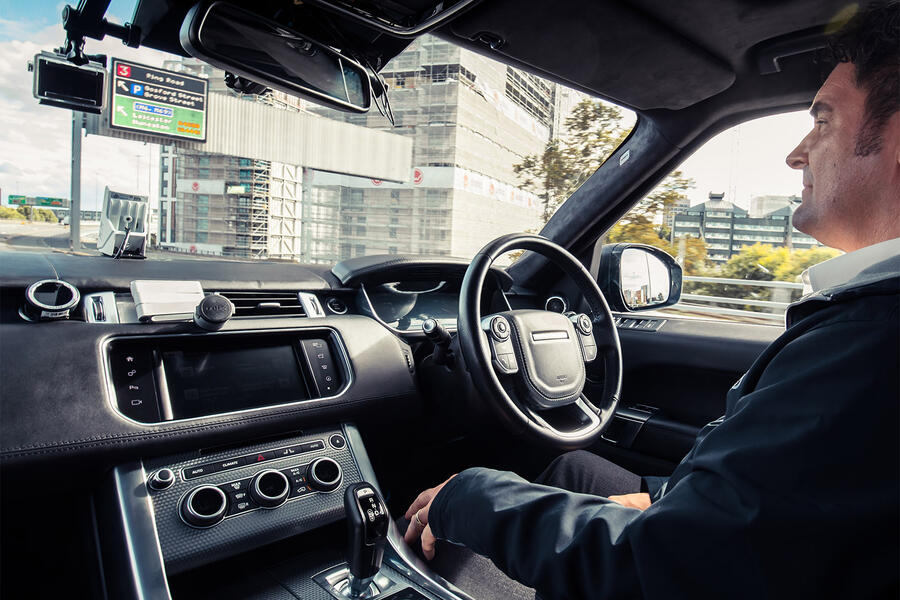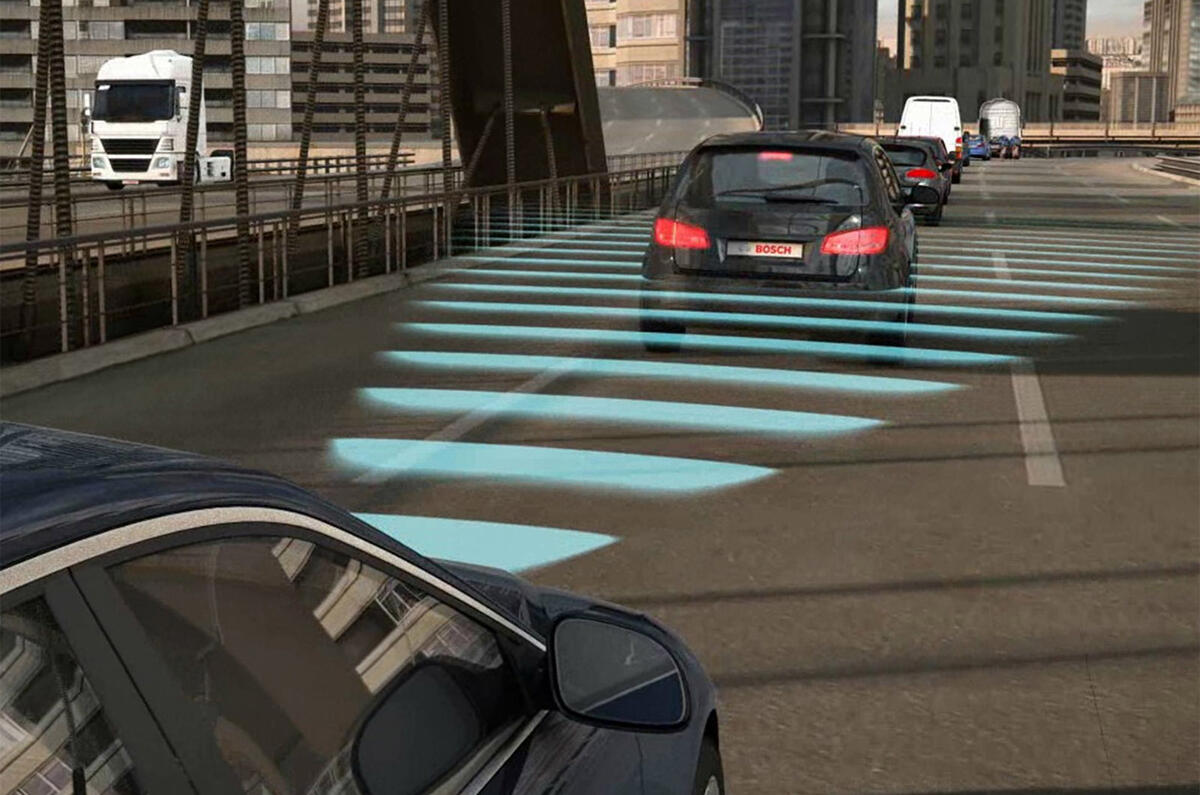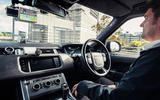Plans to introduce to Britain the Automated Lane Keeping System (ALKS), which is described as a “traffic jam chauffeur technology”, is likely to accelerate the need for more robust autonomous technology than exists on our roads today.
The Department for Transport, which has launched a consultation on its possible use, says ALKS will allow vehicles to stay in lane on motorways without the driver having to do anything but be prepared to take back control when prompted. One of the questions the consultation document poses is “should the UK permit the use of ALKS up to 70mph?”, but the ALKS regulation approved in June 2020 by the United Nations Economic Commission is for a system (in its current form) capable of operating at up to only 37mph.
ALKS is effectively a beefed-up blend of two existing technologies: lane-keeping assistance (LKA) and adaptive cruise control (ACC). These already work at motorway speeds, although some LKA systems take greater control than others. Today’s LKA systems use a stereo camera behind the windscreen to keep an eye on road markings. Its image is run through image-processing software and interpreted, easing the car back into lane if necessary, either via an electric power steering system or by gentle application of individual brakes.
ACC came along in the early 2000s, using radar sensors to maintain a safe distance behind the vehicle in front. Since then, it has evolved a lot. Whereas it could only work down to a certain speed before handing control back to the driver, the latest stop-and-go versions work down to a standstill and do what their name suggests in queues.
More recently, multipurpose cameras have been added to achieve greater accuracy. Bosch ACC systems read the road ahead with a stand-alone radar sensor plus a combined radar sensor and multipurpose camera. Automatic emergency braking adds corner radar sensors to the forward-facing radar and multipurpose camera.
The combined camera and radar is an example of sensor fusion, where the strengths of each are combined to make a sort of super-sensor. The radio frequency-based radar is best for measuring longitudinal distance and speeds (hence the acronym radar, which stands for radio detection and ranging) in any weather, day or night. The camera adds definition and precise measurement of lateral movements.
Hardware is combined with artificial intelligence software to interpret boundaries and give reliable lane detection. Data fusion also allows static or moving objects to be acquired, identified and tracked to build up an accurate, high-definition picture of what lies ahead. The hardware creates a ‘road signature’ good enough for a car driving autonomously to work out its precise position relative to its surroundings, which in autonomous vehicle speak is known as localisation. It’s this kind of advanced sensing and artificial intelligence that’s likely to form the basis of the higher-speed ALKS being investigated for the UK.
Birds have the best sight

Scientists at Cornell University in the US have found a way to achieve the accuracy of expensive lidar laser scanners, thought to be essential for driverless cars, using much cheaper cameras. Stereo cameras alone were thought to be inadequate, but researchers found that analysing a bird’s-eye image, rather than a frontal one, nearly tripled accuracy to approach that of lidar.
READ MORE
Matt Prior: Why lane-keeping assist systems need a rethink
Survey finds majority of UK drivers not ready for driverless cars
How I learned to stop worrying and almost trust self-driving cars







Join the debate
Add your comment
Not very good at the moment
It reacted to joints in the road surface as well as white lines.
The issue that worries me is if you are overtaking a cyclist and cross a white line, the car would try to take out the cyclist.
We found the way to turn it off, which we christened the safe steering switch!
Works well in Model 3
This actually exists in my Model 3. The adaptive cruise control limits to say 30 mph, and the lane departure assistance keeps me in the middle of the lane. I use it sometimes in queues for curiosity to see how well it works. Slowly moving queues it works 100% up to 30mph, but I haven't tried it faster- it keeps up with the other traffic and stops the designated distance behind the car in front, and sets off promptly whenever the car in front does. Actually very impressive and smooth. Of course I'm fully ready to and watching what happens too and hovering over the pedals. Any iput form me disengages the systems, so safe if you are alert. I like driving too much to use it regularly though, and electric cars take most of the pain of driving in queues away anyway.
Autopilot works on dual carriageways and good A roads in dry and very wet weather really well, there's just a slightly uncomfortable delay in steering - it's just a fraction of a second later than I would steer myself, and I like to drive slightly to the right of centre on roads to avoid all the debris at roadside and punctures whereas the system plants you sqaure in the middle. No idea for fog as yet, but will try it when safe. Not going to work in snow clearly as the road markings will be hidden.
It's not fully automated, but it does give me confidence in the technology for now. It's further ahead than I thought, and I'm sure on closed loop new roads with markings, etc and no pedestrians it would work very well. The screen shows what it's picking up : cones;pedestrians;wheelie bins; other cars in front on my own side and the opposite;the size of vehicles;traffic light status, etc. It's not there yet, but you'd be surprised how much it can see already.
Works well in Model 3
This actually exists in my Model 3. The adaptive cruise control limits to say 30 mph, and the lane departure assistance keeps me in the middle of the lane. I use it sometimes in queues for curiosity to see how well it works. Slowly moving queues it works 100% up to 30mph, but I haven't tried it faster- it keeps up with the other traffic and stops the designated distance behind the car in front, and sets off promptly whenever the car in front does. Actually very impressive and smooth. Of course I'm fully ready to and watching what happens too and hovering over the pedals. Any iput form me disengages the systems, so safe if you are alert. I like driving too much to use it regularly though, and electric cars take most of the pain of driving in queues away anyway.
Autopilot works on dual carriageways and good A roads in dry and very wet weather really well, there's just a slightly uncomfortable delay in steering - it's just a fraction of a second later than I would steer myself, and I like to drive slightly to the right of centre on roads to avoid all the debris at roadside and punctures whereas the system plants you sqaure in the middle. No idea for fog as yet, but will try it when safe. Not going to work in snow clearly as the road markings will be hidden.
It's not fully automated, but it does give me confidence in the technology for now. It's further ahead than I thought, and I'm sure on closed loop new roads with markings, etc and no pedestrians it would work very well. The screen shows what it's picking up : cones;pedestrians;wheelie bins; other cars in front on my own side and the opposite;the size of vehicles;traffic light status, etc. It's not there yet, but you'd be surprised how much it can see already.